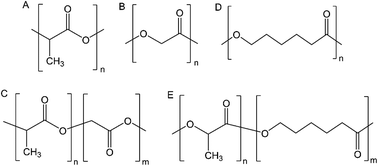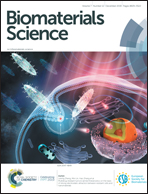Synthetic bioresorbable poly-α-hydroxyesters as peripheral nerve guidance conduits; a review of material properties, design strategies and their efficacy to date
Abstract
Implantable tubular devices known as nerve guidance conduits (NGCs) have drawn considerable interest as an alternative to autografting in the repair of peripheral nerve injuries. At present, there exists a lack of biodegradable, biocompatible materials for the fabrication of NGCs with physical properties which suitably match the native nerve tissue. Most of the existing reports have been confined to the traditional synthetic aliphatic polyesters due to their naturally-occurring degradation by-products, suitably slow in vivo resorption timeframes and relatively diverse and tailorable range of material properties. Moreover, these thermoplastic polymers can be processed into NGCs from various methods and further tweaking of physical properties can be achieved during fabrication. Although there have been many successful reports of nerve gap repair using NGCs made from these materials, the majority have been confined to basic tubular designs across short to medium nerve gaps with at best equivalent outcomes to autografts. This article reviews the performance of poly-α-hydroxyester tubes to date (including modifications to basic hollow conduits) and is intended to aid researchers as they aim to create biomimetic NGCs capable of bridging larger nerve gaps with superior results to autografting. Based on the existing reports, a next-generation bioresorbable NGC should involve a highly flexible poly-α-hydroxyester outer tube, most suitably from a lactide-caprolactone co-polymer, with some combination of internal lumen contact guidance and bioactive neurotrophic factors. However, detailed further experimentation and an interdisciplinary approach will be required to arrive at an ideal final configuration.



 Please wait while we load your content...
Please wait while we load your content...